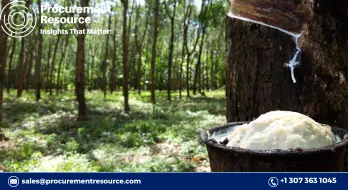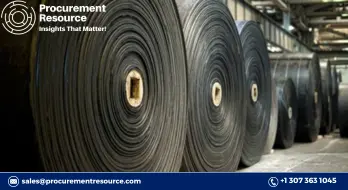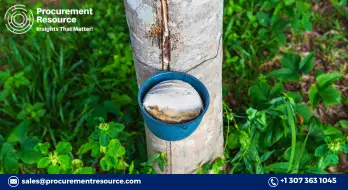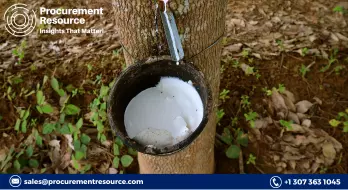Product
Natural Rubber Price Trend and Forecast
Natural Rubber Price Trend and Forecast
Natural Rubber Regional Price Overview
Get the latest insights on price movement and trend analysis of Natural Rubber in different regions across the world (Asia, Europe, North America, Latin America, and the Middle East & Africa).
Natural Rubber Price Trend for Q2 of 2025
| Product | Category | Region | Price | Time Period |
| Natural Rubber | Packaging | China | 1901 USD/MT | June 2025 |
Stay updated with the latest Natural Rubber prices, historical data, and tailored regional analysis
Asia
In Asia, natural rubber prices saw a consistent downward trend throughout the second quarter of 2025. The start of the harvesting season in key producers like Thailand, Indonesia, and Vietnam led to increased tapping activities and a steady rise in output. Weather conditions were mostly favorable, and although some areas faced plant diseases or dryness, overall production progressed as expected.
Natural Rubber Price Chart
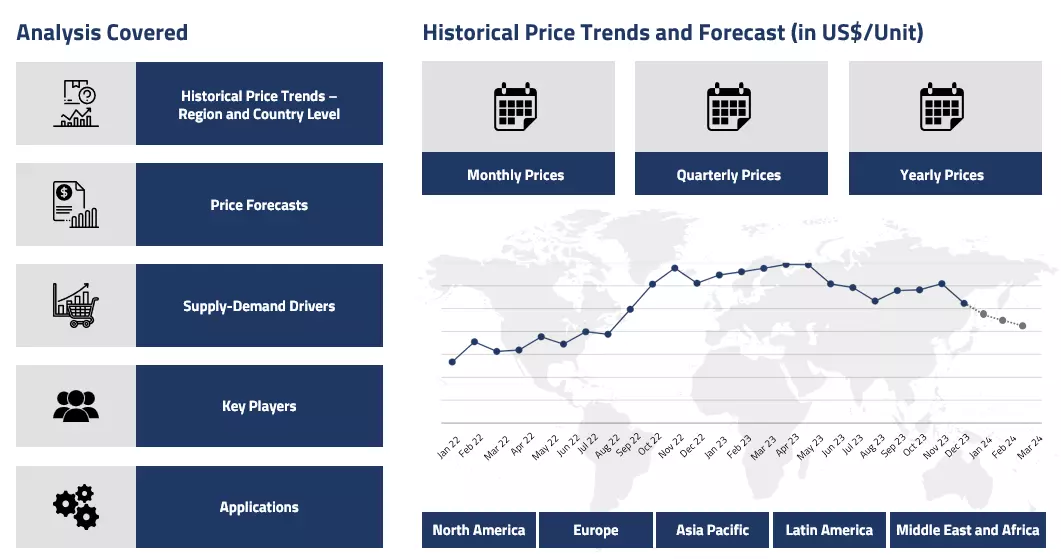
Please Login or Subscribe to Access the Natural Rubber Price Chart Data
In China, prices fell noticeably due to weak domestic demand and high port inventories, especially in Qingdao. Tire manufacturers operated at reduced capacity in April, with only slight recovery in May, limiting demand for natural rubber. Inventory levels remained high despite some drawdowns in May, and raw material costs fluctuated.
The market was also affected by trade tariff uncertainties and limited new export orders, keeping sentiment weak across the region. The spot prices settled at around 1901 USD/MT in the Chinese domestic market towards the end of concerned period.
Europe
In Europe, natural rubber prices remained under pressure during Q2, following trends in the global market. The oversupply from Asia and weak regional industrial demand, particularly from the automotive and manufacturing sectors, contributed to price softness. European buyers were cautious, holding off on large purchases in anticipation of continued price declines.
While the listing of Shanghai Natural Rubber Futures on the Osaka Exchange presented new hedging tools, it had limited short-term impact on physical rubber demand. The subdued economic environment and uncertainty around trade flows also discouraged aggressive buying. As a result, the European market experienced mostly flat or slightly declining rubber prices throughout the quarter.
North America
In North America, the market for natural rubber was similarly weak. U.S. manufacturers, especially in the automotive sector, saw reduced orders and ongoing cost pressures from tariffs and global supply chain issues. This led to cautious purchasing behaviour and cutbacks in production.
Although demand from tire producers provided some support, it was not enough to counterbalance the high global supply. Buyers delayed orders, and business confidence remained low. These factors weighed on prices, which continued to slide gradually over the quarter.
Analyst Insight
According to Procurement Resource, Natural Rubber prices are expected to remain under pressure in the coming future. High inventory levels and increasing supply may outweigh the gradual rise in global demand, keeping the market in a state of weak consolidation.
Natural Rubber Price Trend for Q4 of 2024
| Product | Category | Region | Price | Time Period |
| Natural Rubber | Packaging | Asia | 2465 USD/MT | October'24 |
| Natural Rubber | Packaging | Asia | 2383 USD/MT | December'24 |
| Natural Rubber | Packaging | Europe | 2200 USD/MT | October'24 |
| Natural Rubber | Packaging | Europe | 2095 USD/MT | December'24 |
Stay updated with the latest Natural Rubber prices, historical data, and tailored regional analysis
Asia
Natural rubber markets in Asia experienced regional variations throughout Q4 of 2024. Agricultural production in Thailand and Indonesia was disrupted by erratic weather patterns. Heavy rains in Indonesia made harvesting more difficult, while flooding caused delays in order deliveries during the early days of the quarter.
Despite these challenges, demand from the automobile and other sectors remained stable throughout the period, leading to fluctuating prices within a range. The monthly average natural rubber prices were around 2465 USD/MT in October and approximately 2383 USD/MT in December.
Europe
During the fourth quarter, the European market experienced mixed trends in the natural rubber price curve. In the early part of the quarter, the market was heavily impacted by insufficient demand from major industries such as automotive and tire manufacturing. Despite this pressure, stock levels remained high due to the influx of imports from Asia, which led to oversupply. This was reflected in the notable downward movement of the natural rubber price curve during the first two months of the quarter.
Additionally, manufacturers and traders prioritized clearing inventories by offering discount incentives in anticipation of the year-end deadline. The natural rubber price fell from approximately 2200 USD/MT (CIF) in October to approximately 2095 USD/MT in December. Towards the end of the quarter, prices showed signs of stabilization.
North America
The natural rubber price curve reflected global trends in the North American market during the last quarter of 2024. The natural rubber prices remained relatively stable, with fluctuations observed, but prices stayed within a range as a balance between supply and demand was maintained during the period.
The market exhibited cautious behavior ahead of the upcoming elections in the United States. On-demand purchases were made, while the automobile and technical textile sectors showed moderate demand for the commodity amid a slight decline in imports. As the quarter progressed, a similar price trend was maintained, reflecting the uncertainties surrounding government policies.
Analyst Insight
According to Procurement Resource, the natural rubber prices may witness steady trends in the near future as reduced production capacities during the new year holidays is expected to balance out the demand making the prices to waver in the narrow range.
Natural Rubber Price Trend for Q3 of 2024
Asia
In Asia, where the majority of natural rubber production occurs, countries like Thailand, Vietnam, and Indonesia are grappling with adverse climatic conditions. These challenges have led to reduced yields and operational inefficiencies, affecting the overall supply of natural rubber. As producers navigate these difficulties, market sentiment is likely to lean toward a cautious stance, with stakeholders closely monitoring weather patterns and their implications for tapping activities.
Despite these constraints, some signs of resilience are emerging, particularly in China's demand for natural rubber. As the Chinese economy continues its recovery, a revitalized appetite for tire production and other rubber-dependent sectors may provide a stabilizing influence on the market.
Europe
In Europe, the natural rubber landscape is characterized by the complex interplay of regional manufacturing needs and external supply pressures. European tire manufacturers are anticipated to be more discerning in their purchasing strategies, influenced by the volatility of raw material prices. While the automotive sector is rebounding, the ongoing uncertainty in supply chains, exacerbated by geopolitical factors, may lead to strategic stockpiling by manufacturers. This cautious approach could create short-term fluctuations in demand, resulting in a somewhat fragmented pricing environment.
The demand from the healthcare and construction industries, which also rely on natural rubber, will further contribute to the overall market dynamics, although any uptick in consumption may not completely offset the supply constraints.
North America
In North America, the narrative surrounding natural rubber prices in Q3 2024 is shaped by the region's significant reliance on imports for raw material supplies. The ongoing price pressures are likely to be felt acutely in the manufacturing sectors, particularly in tire and rubber product production. As U.S. manufacturers face escalating costs, there could be increased scrutiny on procurement strategies, with many companies looking to diversify their supply sources. This shift may not only mitigate the impact of price volatility but also foster long-term sustainability in the face of fluctuating market conditions. The influence of currency exchange rates will also play a critical role, as changes in the strength of the U.S. dollar against rubber-producing countries’ currencies could affect pricing dynamics and trade relationships.
Analyst Insight
According to Procurement Resource, the price trend of Natural Rubber is expected to showcase the consequences of slow influx of raw materials globally and fast paced expansion of its demand.
Natural Rubber Price Trend for Q2 of 2024
| Product | Category | Region | Price | Time Period |
| Natural Rubber | Packaging | China | 1904 USD/MT to 2050 USD/MT | Q2'24 |
Stay updated with the latest Natural Rubber prices, historical data, and tailored regional analysis
Asia
China's natural rubber market attained a bearish tone during the early phase of the second quarter. However, since then, the market momentum has paced up under the influence of limited raw material output from major production areas like Thailand and Vietnam, compounded by the adverse weather effects in Chinese regions such as Yunnan and Hainan.
These supply constraints were further aggravated by the return of consumer confidence, leading to an overall increase in the average prices of natural rubber from 1904 USD/MT to 2050 USD/MT. However, the accelerating pace of the market was challenged by high volatility and gradual recovery of raw material supply chains in mid to late June with the stabilization of weather conditions and off-period for tire companies, leading to average sales figures and restrained procurement activities.
Europe
In the European countries, the natural rubber market defied the global trend as the price quotations declined consistently throughout Q2'24. The traders anticipated that these bleak sentiments of the market were influenced by the limited purchasing activities of the downstream industries and supply constraints.
The European market is 100% dependent on imports from Indonesia, Thailand, Cote d'Ivoire, and Malaysia, but in recent times, the diversion of the downstream industries to sustainable imports has posed a challenge for the market, limiting the trading activities of natural rubber downstream products, exerting a negative influence on the market. The EUDR regulations and the inclining cost of transportation with the diversion of the Red Sea route have further escalated the concerns of the traders and consumers, reflected well in the price trend of European natural rubber.
North America
In the month of April, Vietnam exported approximately 1090 tons of rubber to the US, marking an increase of 0.3% as compared to last year as the region expanded its consumer base. This modest inclination in export factors was not only limited to Vietnam, as Thailand and Indonesia reported similar trends. Although on the other hand, these nations reported a slight decline in their domestic production volumes, constricting the global supply chains.
Along with these fundamentals, the container shipping charges also witnessed a gradual incline in their quotations. Meanwhile, the currency fluctuations with the strengthening of producer countries' currency values against the US dollar additionally fueled the recovery of the natural rubber market in the US. All these primary and secondary factors of the market suggest a positive outlook for the natural rubber market in North America during the second quarter of 2024.
Analyst Insight
According to Procurement Resource, the price trend of Natural Rubber is estimated to incline in major parts of the given the reduced production forecasts of Thailand and Indonesia and surge in the procurement rates of the downstream industries, particularly the tire industries in the near quarters.
Natural Rubber Price Trend for Q1 of 2024
| Product | Category | Region | Price | Time Period |
| Natural Rubber | Packaging | China | 1800 USD/MT | January 2024 |
| Natural Rubber | Packaging | China | 1892 USD/MYT | March 2024 |
| Natural Rubber | Packaging | Europe | 1767 USD/MT | January 2024 |
| Natural Rubber | Packaging | Europe | 1909 USD/MT | March 2024 |
Stay updated with the latest Natural Rubber prices, historical data, and tailored regional analysis
Asia
Natural rubber prices witnessed inclining patterns in the majority of the Asian markets during the first quarter of 2024. The supply and demand interplay were complicated; in consideration of the global demands, the supplies were highly stifled. In Thailand, one of the world’s leading rubber producers, adverse weather conditions with major floods affected the outputs. Asian region constitutes of the major natural rubber exporting countries of the world. Along with Thailand, Malaysia, and Indonesia also contribute greatly to the global natural rubber market.
Tet holiday celebrations in Vietnam and China limited the trade a little in the early days. However, they too quickly joined the inclining trail of natural rubber prices. In the Chinese market, the average monthly prices (spot FD for RSS1) went from about 1800 USD/MT in January’24 to around 1892 USD/MYT in March’24.
The story in the Indian natural rubber market was also not any different. Rubber prices finally upsurged after a downtime of 3 years. Kerala rubber farmers saw increased revenues because of the market weight being tilted in the supply direction. Overall, largely positive market sentiments were witnessed in Q1’24.
Europe
The European natural rubber market inclined by approx. 8% at the price front during the said time period. Thailand, one of the major exporters of natural rubber saw devastating floods last season which significantly brought down the available supplies in the rubber market. Along with such tightened supplies the freight and shipping situation has also been worsening as the Red Sea crisis unfolded over the past few months.
Shipping charges saw a drastic incline because of which the natural rubber also ascended on the price index. The monthly average prices in the European markets went from around 1767 USD/MT in January’24 to about 1909 USD/MT in March’24. Conclusively a very favorable market dynamic was noticed for natural rubber during the first three months of 2024.
North America
The price situation in the American natural rubber market was no different than its Asian and European counterparts; the prices were found to be rising here as well. Supplies were constricted and the available volumes in the inventories plummeted. Demand from the downstream consuming sectors was on the rise.
The global economy was also witnessing a severe supply chain crisis. Wars in Europe and the Middle East complicated geopolitical and economic relationships between nations and trading partners. Amidst all this chaos, the natural rubber prices in the US market kept heading north throughout the period of discussion.
Analyst Insight
According to Procurement Resource, the Natural Rubber price trends are expected to continue rising in the near future as the supply situation will take some time to improve.
Natural Rubber Price Trend for Q4 (October - December) of 2023
Asia
In the fourth quarter of 2023, the Asian price trend for Natural Rubber experienced a complex and volatile price trend. The primary drivers of this fluctuation were the excessive rainfall in major rubber-producing countries like Thailand and Vietnam, which significantly disrupted latex extraction and reduced rubber quality. This situation led to concerns about supply shortages, exerting upward pressure on Natural Rubber prices.
Despite these challenges, demand remained robust, particularly in the tire industry, which continued to operate at full capacity, further straining the supply-demand balance. As a result, the Natural Rubber prices in Asia saw an overall upward trend, reflecting the region's critical role as a major producer in the global rubber market.
Europe
In Europe, the Natural Rubber price trend in the fourth quarter of 2023 mirrored the global trend to an extent but was influenced by unique regional factors. The primary concern in Europe was the supply chain disruptions due to geopolitical tensions and adverse weather conditions in key rubber-producing regions. The European tire and automotive industries, major consumers of Natural Rubber, faced increasing operational costs due to these supply constraints, contributing to a rise in Natural Rubber prices.
The market also had to navigate the additional challenge of balancing environmental regulations with industry demands, especially in light of the European Union's Deforestation-free Regulation (EUDR). Overall, the European Natural Rubber market exhibited a rising price trend in the fourth quarter of 2023, driven by supply challenges and steady industrial demand.
North America
The North American Natural Rubber price trend in the fourth quarter of 2023 witnessed an uptrend impacted by global supply chain issues and heightened geopolitical tensions. The market witnessed a rising trend in Natural Rubber prices, largely influenced by the disruptions in major rubber-producing countries in Asia and the resultant supply shortages.
Additionally, North America's substantial dependence on imports for its rubber needs made the market particularly sensitive to fluctuations in global rubber production. The rising crude oil prices further complicated the situation, as they often correlate with synthetic rubber prices, a substitute for natural rubber. The tire industry in North America, a major consumer of Natural Rubber, faced increased production costs, reflecting the overall market trend of rising prices.
Moreover, the heightened shipping costs and potential disruptions in ocean freight due to geopolitical tensions added to the market's challenges. In summary, the North American Natural Rubber market in the fourth quarter of 2023 was characterized by escalating prices driven by supply constraints and increased global demand, amid a backdrop of complex geopolitical and economic factors.
Analyst Insight
According to Procurement Resource, in 2024, the global natural rubber market is poised for continued complexity, with probable demand decline in non-ANRPC regions due to geopolitical and economic factors. However, robust growth in ANRPC countries like China, Thailand, and India could partly offset this trend, requiring stakeholders to navigate a multifaceted and evolving market landscape.
Natural Rubber Price Trend for Q3 (July - September) of 2023
Asia
Natural Rubber experienced mixed price trend throughout the third quarter of the year 2023. In the Chinese domestic natural rubber market, the prices dipped marginally in the first half of the quarter but rebounded sharply in the latter half of Q3'23. However, since the overall quarterly inclination at the end of the three-month time span was just 2%, the prices fluctuated within a limited range. The average monthly spot prices varied from around 1665 USD/MT in July '23 to about 1711 USD/MT in September '23.
Similarly, the Indian natural rubber market was also stable with an almost plateaued price graph since the average monthly prices shifted from about 2182 USD/MT (EXW, Kottayam) in July to around 2195 USD/MT in September of 2023. These price patterns suggested a healthy supply and demand dynamic for natural rubber in the region during the given time. Overall, a stable price analysis was witnessed for natural rubber in Q3'23.
Europe
In the European natural rubber market, the price index registered numbers wavering within a confined range; however, here, the prices first escalated from July to August and then dipped in the last month of the quarter. This can be seen by the quarterly variation in the monthly average prices as the prices moved from about 1635 USD/MT (CIF, RSS1) in July '23 to around 1630 USD/MT in September '23. Overall, some stagnancy was experienced in the European natural rubber market during the said time.
North America
The North American natural rubber market also fluctuated more on the lower side of the price curve. The inflation and complex economic situation in the region hindered the market sentiments at both suppliers and consumers ends. Overall, tepid market performance was witnessed by natural rubber during the said time period.
Analyst Insight
According to Procurement Resource, after the steadiness witnessed, the market prospects look promising for the coming months. The natural rubber prices are expected to rise going forward.
Natural Rubber Price Trend for the First Half of 2023
Asia
Mixed price trend were observed for natural rubber in the Asian market. The spot prices went from about 1843 USD/MT in January to around 1651 USD/MT in June in the Chinese domestic market. Inventory and supply levels influenced the price trend amidst stable demands. As the Chinese manufacturing and industrial activities started opening up post-lockdown, supplies increased, supporting the declining price trend.
Europe
European Natural Rubber prices mostly declined during the first half of 2023. The only variation was in the first month, where the FD Spot prices averaged from around 1715 USD/MT (CIF, Europe) to around 1875 USD/MT (CIF, Europe) in February, but soon after, those prices started declining and continued declining till the end of the second quarter. The prices stood at about 1670 USD/MT in June’23. The price trend for natural rubber were influenced by stable demands and high inventories in H1 2023.
North America
The US Natural Rubber market behaved very similarly to the Asian market as the prices mostly remained on a downward trend. As the inventories grew while energy and crude oil prices declined, suppliers had to revise the asked prices as the demands stayed stable and the market experienced reduced momentum. Overall, fluctuating price trend were observed.
Analyst Insight
According to the Procurement Resource, Natural Rubber prices are expected to continue similar fluctuating price trend, as market offtakes will continue to remain volatile.
Natural Rubber Price Trend for the Second Half of 2022
Asia
In the third quarter of 2022, the prices of natural rubber witnessed a gradual decline due to the weak demand from the tire and adhesive industries. The production rates in the region were reduced and as a result, the offtakes declined. In addition to this, the supply remained abundant leading to stockpiling, further aiding the price decline. The fourth quarter was also identical to the previous one in terms of demand. Additionally, crude oil and natural gas prices fell, further contributing to the falling price trend for natural rubber.
Europe
The third quarter was favourable for the natural rubber market as the prices inclined due to stable demand from the tire and adhesive industries. The increased prices of raw materials drove the production costs further aiding the price rise. However, the fourth quarter did not follow these steps and the prices declined as a result of weak downstream demand. The automotive sector took the biggest hit and with the fall in the prices of crude oil, the price trend of natural rubber struggled to remain afloat in the fourth quarter.
North America
The price trend frequently fluctuated in the North American region as the rise in production and excessive supply declined the prices in August. However, the disruptions in the supply chains and increase in demand resulted in an incline in the prices of natural rubber towards the end of the third quarter. In the fourth quarter, the prices declined gradually as the automotive sector saw sluggish demand and the cost of production along with crude oil and natural gas fell aiding in the declining price trend for natural rubber.
Analyst Insight
According to Procurement Resource, the price trend for Natural Rubber are expected to show a mixed trend in the upcoming quarter given the rise in the momentum of the automotive sector and demand outlook globally.
Natural Rubber Price Trend for the First Half of 2022
Asia
According to ANRPC, the global outlook for natural rubber looks positive for the current year. The price of natural rubber on the Singapore Commodity Exchange- one of the vital international exchanges for rubber, went from 1.97 USD/kg in January 2022 to 2.03 USD/kg in June 2022. The prices peaked in March 2022, averaging 2.12 USD/kg.
The price trend for the commodity were partially mixed in the Indian Domestic market. Despite the strong market demand, the market suffered from many uncertainties in the form of labour shortages, off-tapping season, adverse climate, surging crude oil prices, and delayed shipment of supplies which aggravated the supply tightness in the following months. In March, the futures contract of natural rubber averaged 168.90 INR/kg on Multi Commodity Exchange.
The contract price of SMR 20 – majorly imported by tyre manufacturers, averaged 129.51 INR/kg, and that of Latex averaged 123.44 INR/kg. The futures contract prices (May 2022) of natural rubber averaged 161.69 INR/kg or 13.47 RMB/kg on Shanghai Futures Exchange. For Latex, the price averaged 123 INR/kg, and that of RSS4 averaged 171 INR/kg.
In the Chinese domestic market, natural rubber prices fluctuated a bit. The prices went from 164.41 USD cents/kg in May 2022 to 163.65 USD cents/kg in June 2022. This fall in the prices of the commodity was due to the reduced activity caused by covid-19 restrictions coupled with the plunging confidence of the buyers/traders in the market conditions.
Europe
Owing to the current geopolitical tensions, crude oil prices surged worldwide, causing the costs of synthetic rubber to inflate. These inflated prices raised the demand and consumption of natural rubber in the market, thereby driving its price trend towards the higher end of the scale. There has been a continuous hike in its prices since the start of the current year. Prices of RSS3 grade averaged 181.8 eurocents/kg in January.
North America
During the first half of 2022, the prices of US natural rubber averaged between 2.79 USD/kg to 2.91 USD/kg or 2789.89 USD/MT in New York and Washington DC.
Natural Rubber Price Trend for Fourth Quarter of 2021
Asia
In November 2021, the natural rubber prices in India were approaching the 200 INR/kg barrier, having reached an eight-year high. The increase was sparked by a severe scarcity, exacerbated by exceptional rains during peak tapping season. The RSS-4 grade which is utilized in the tyre sector was priced at 188 INR/kg, up more than 9% in the last month.
Merchants stated that the market's unofficial prices were somewhere around 192 INR/kg. Heavy rains occurred on top of import bottlenecks and skyrocketing latex prices, all of which occurred during November's prime tapping season. Typically, rubber estates are rain-guarded between April and May. However, it was hurt hard this year by Covid-19's revival and the lockdown. The rain guards, which were erected to endure the Southwest monsoon, proved unsuccessful during October and November's intense rains.
The rubber sector had asked the government to request concessionary imports of the product which the government had not considered. Simultaneously, a container shortage resulted in an increase in freight prices, blocking lucrative imports of the item. However, in November and December, the rate of RSS 4-grade fell to approximately 162 INR/kg.
Natural rubber prices in China were highly dependent on how quickly and effectively China resolved its power supply problems. The dynamics were critical to the market's short-term fundamentals. China utilized 507,000 MT of the commodity in August and 50,000 MT in September, despite the fact that manufacturing activities were hampered by the power supply shortage.
International costs decreased significantly since June. This was primarily due to weak demand from China, the world's largest customer. However, by the second part of October, it was hoped that China's manufacturing industry would resume normal operation, as a result of which worldwide natural rubber prices would begin to climb northward and firm.
Europe
According to data recently released by the SNCP (Syndicat National du Caoutchouc et des Polymères), prices for rubber products continued to rise during the second half of the year. Prices for natural and synthetic base material continued to rise in January, according to the French rubber industry group.
In this market, SNCP's RSS3 grade tracker indicated a year-on-year price recovery to 181.88 EUR cents/kg in January 2022. The RSS3 pricing trend showed a substantial improvement in the first month of Covid-hit 2021, when prices approached the 150 EUR cents/kg barrier, albeit they remained much lower than the above 200 EUR cents/kg prices seen a year ago.
Natural Rubber Price Trend for First, Second and Third Quarters of 2021
Asia
By August 2021, the domestic economy in India had already experienced an acute scarcity of raw materials. The severe Covid crisis in Kerala harmed production even more. Additionally, the increase in latex consumption impacted sheet rubber production, which saw a 25-30% decline in output. Latex was purchased at a high price of 155 INR/kg.
To avoid complications with sheet processing, rubber planters were compelled to switch to latex, although temporarily. In India, the product’s productivity rose 28% year on year to 325,000 MT during the first six months of FY21. Nonetheless, it was unable to keep up with rising spending as the economy recovered from the consequences of the Covid-19 crisis. Between January and August 2021, consumption increased by roughly 45% to 630,000 MT.
Imports were contracted to cover the gap by the struggling tyre industry but were delayed due to an extreme container scarcity and freight rate increases. Additionally, prices remained stable in India due to the following factors such as supply and demand outages caused by lower output in the country's largest producer of the commodity, Kerala, a decline in automobile production due to a semiconductor chip shortage, and increased demand for latex gloves following the COVID-19 pandemic. Numerous producers were exporting rubber as latex rather than turning it into sheets for industry.
Natural rubber prices in China continued to rise in August, owing to China's increased acquisition in huge amounts. They were expected to strengthen further, owing to China's increased imports in significant amounts. Between August and November, China was anticipated to consume approximately 500,000 MT. However, only 115,000 MT of this could be met by domestic production. For the next couple of months, mood in the physical markets was dominated by the imminent arrival of Chinese purchasers into the Asian market for sizable imports.
Europe
Consumption fell considerably in the European region in 2021-2022 as a result of decreasing vehicle production. Nonetheless, a late-year resurgence in both demand and oil prices provided a much-needed boost to the product's values.
North America
Prices remained stable due to low demand. They decreased to 1.74 USD/kg in November 2021, from approximately 2.40 USD/kg in March 2021, a seven-year high. Demand dwindling as a result of lower-than-expected vehicle sales, a result of the semiconductor shortfall, helped keep expenses under control as two-thirds of natural rubber was being used in tyre manufacturing.
Global logistical delays, unexpected rises in ocean freight costs, and an acute scarcity of semiconductors, all weighed on the rebound momentum in a number of critical sectors. Additionally, there were geopolitical concerns, most notably the upheaval in Afghanistan as a result of the US's precipitous exit, which destabilized the markets. Climate and geopolitical concerns drew speculative investors away from risky assets, which had an effect on its futures.
Natural Rubber Price Trend for the Year 2020
Asia
Natural Rubber prices were quoted at 14,722 INR/100 kg in Kottayam, India for 2020. Since April 1, 2020, their price in India have nearly doubled. The spike has been linked primarily to global reasons, most notably China's large volume purchases from the top producer. RSS-4 grade was quoted at 163 INR/kg in Kottayam on December 1, a six-year peak in India.
This increased price was necessary due to Thailand's manufacturing being harmed by new coronavirus-related travel restrictions. The limitations stopped Laotian and Myanmarese rubber tappers from visiting Thai rubber estates. Additionally, trees in South-East Asia had been afflicted by pestalotiopsis, a fungal disease that results in irregular leaf fall. Indian production was reduced in 2020 as a result of growers abandoning the tapping technique.
Europe
Global natural rubber prices increased once more, as exporters targeted the global automobile and other processing plants. Nonetheless, because the pandemic remained uncertain, local exporters were cautious in setting profit objectives for this year. In 2020, France sold natural rubber worth 87 million US dollars to other nations.
As a result, France was listed among the world's top 15 natural rubber exporting countries by value in 2020. Germany's exports were worth 79.2 million US dollars in 2020. This was a nearly 10% reduction from the previous year. Germany remained, nevertheless, one of the top twenty exporters of the product in the world.
North America
90% of the world economy is reliant on Asia for natural rubber supply. For instance, the United States imported natural rubber worth $140 million in March 2020 solely. Travel limitations associated with the COVID-19 outbreak had a significant influence in 2020 on the natural rubber production declines.
It hampered the physical access of migrant labourers from Laos, Myanmar, and other border nations to Thailand and Malaysia's plantations and fields. The harbors in that region were heavily struck by the epidemic, resulting in increased loading / unloading delays, as well as container shortages.
Latin America
Between June 2020 and November 2020, the price of the product climbed from 31.2 MXN/kg to 46.56 MXN/kg. The growing natural rubber prices were attributable to global industries grinding to a halt as a result of the coronavirus epidemic, as well as the resulting demand and supply gap.
Procurement Resource provides latest prices of Natural Rubber. Each price database is tied to a user-friendly graphing tool dating back to 2014, which provides a range of functionalities: configuration of price series over user defined time period; comparison of product movements across countries; customisation of price currencies and unit; extraction of price data as excel files to be used offline.
About Natural Rubber
Natural Rubber is basically an elastic substance that is derived from the latex sap of trees, especially those trees that do belong to the genera Hevea and Ficus. Moreover, it is an elastomer or an elastic hydrocarbon polymer. It is a thermoplastic, which can further be vulcanised like other synthetic rubbers.
Natural Rubber Product Details
| Report Features | Details |
| Product Name | Natural Rubber |
| Synonyms | India rubber, Latex, Amazonian rubberCaucho or caoutchouc |
| Industrial Uses | Tyres, Footwears, Stationary Item, Balloons, Gloves, Tubes, Others |
| Supplier Database | Sri Trang Agro-Industry Plc, Thai Hua Rubber Company Limited, Halcyon Agri. , Von Bundit Co., Ltd., Southland Rubber Group |
| Region/Countries Covered | Asia Pacific: China, India, Indonesia, Pakistan, Bangladesh, Japan, Philippines, Vietnam, Iran, Thailand, South Korea, Iraq, Saudi Arabia, Malaysia, Nepal, Taiwan, Sri Lanka, UAE, Israel, Hongkong, Singapore, Oman, Kuwait, Qatar, Australia, and New Zealand Europe: Germany, France, United Kingdom, Italy, Spain, Russia, Turkey, Netherlands, Poland, Sweden, Belgium, Austria, Ireland Switzerland, Norway, Denmark, Romania, Finland, Czech Republic, Portugal and Greece North America: United States and Canada Latin America: Brazil, Mexico, Argentina, Columbia, Chile, Ecuador, and Peru Africa: South Africa, Nigeria, Egypt, Algeria, Morocco |
| Currency | US$ (Data can also be provided in local currency) |
| Supplier Database Availability | Yes |
| Customization Scope | The report can be customized as per the requirements of the customer |
| Post-Sale Analyst Support | 360-degree analyst support after report delivery |
Note: Our supplier search experts can assist your procurement teams in compiling and validating a list of suppliers indicating they have products, services, and capabilities that meet your company's needs.
Natural Rubber Production Process
- Production of Natural Rubber from Rubber Trees
The rubber trees are ‘tapped’ for collecting the rubber latex. For this, an incision is made into the bark of the tree where the latex sap is collected in cups. It is further processed industrially before commercial use.
Methodology
The displayed pricing data is derived through weighted average purchase price, including contract and spot transactions at the specified locations unless otherwise stated. The information provided comes from the compilation and processing of commercial data officially reported for each nation (i.e. government agencies, external trade bodies, and industry publications).
Assistance from Experts
Procurement Resource is a one-stop solution for businesses aiming at the best industry insights and market evaluation in the arena of procurement. Our team of market leaders covers all the facets of procurement strategies with its holistic industry reports, extensive production cost and pre-feasibility insights, and price trends dynamics impacting the cost trajectories of the plethora of products encompassing various industries. With the best analysis of the market trends and comprehensive consulting in light of the best strategic footstep, Procurement Resource got all that it takes.
Client's Satisfaction
Procurement Resource has made a mark for itself in terms of its rigorous assistance to its clientele. Our experienced panel of experts leave no stone unturned in ensuring the expertise at every step of our clients' strategic procurement journey. Our prompt assistance, prudential analysis, and pragmatic tactics considering the best procurement move for industries are all that sets us apart. We at Procurement Resource value our clients, which our clients vouch for.
Assured Quality
Expertise, judiciousness, and expedience are the crucial aspects of our modus operandi at Procurement Resource. Quality is non-negotiable, and we don't compromise on that. Our best-in-class solutions, elaborative consulting substantiated by exhaustive evaluation, and fool-proof reports have led us to come this far, making us the ‘numero uno' in the domain of procurement. Be it exclusive qualitative research or assiduous quantitative research methodologies, our high quality of work is what our clients swear by.
Related News
Table Of Contents
Our Clients
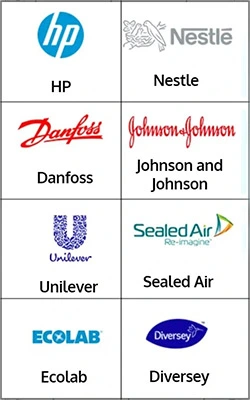
Get in Touch With Us
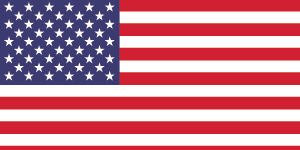
UNITED STATES
Phone:+1 307 363 1045
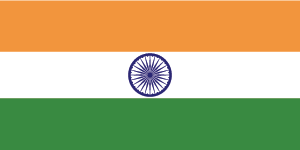
INDIA
Phone: +91 8850629517
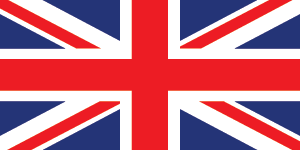
UNITED KINGDOM
Phone: +44 7537 171117
Email: sales@procurementresource.com


